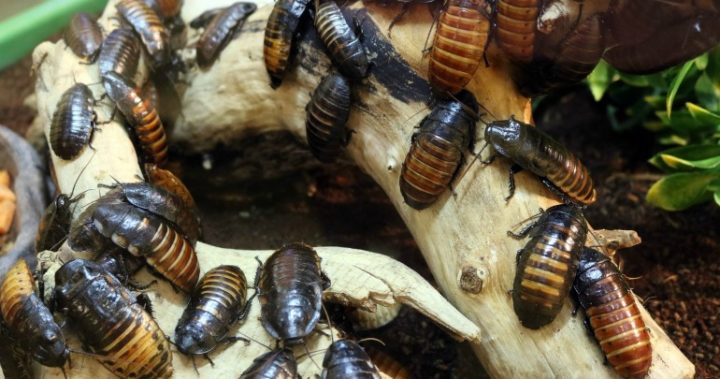
No one likes spotting a cockroach making a run for it across the floor, and in most households, it’s usually stopped in its tracks with a brutal bash of the shoe or half a can of Mortein – those guys are HARD to kill!
But imagine if the cockroach was even bigger, smarter and there were many, many more of them? That’s not a total impossibility, if a scary story published by the reputable South China Morning Post is correct.
The SCMP says that a farm in the Chinese city of Xichang is actually breeding billions of the creepy-crawlies each year so they can be used for traditional medicine and to be fed to livestock as a form of protein. Although there are others like it in China, it’s the biggest farm of its kind in the world – about the size of two football fields – and allowing the cockroaches to escape would be a catastrophe, according to scientists interviewed by the Hong Kong-based newspaper.
Locked inside a prison of sorts, the cockroaches are free to roam around, mating with each other and eating whatever they can find. There’s no risk of them getting stomped on, because the farm has few human workers and is largely operated by artificial intelligence. That means the farm can produce 28,000 full-sized cockroaches per square foot every single year.
The colony of cockroaches, which is bigger than the world’s entire human population, is the first to purposely breed such a high number of the bugs in one space.
Read more: Banishing cockroaches without toxic chemicals
But while it’s all very good and well for research purposes – after all, cockroach milk is apparently one of the world’s most nutritious substances – there are fears over what could happen to the environment if these billions of cockroaches were accidentally released, either due to a natural disaster damaging the facility or through a failure of the AI or just simple human error.
Scientists warned in the SCMP that serious lines of defence needed to be implemented in the case of release, particularly given that it’s not impossible that the intensive reproduction of the roaches, and genetic screening, possibly for size, could produce ‘super-cockroaches’.
While unlikely, there is no knowing what could happen if this occurs, given cockroaches have survived major shifts in the environment over the course of millions of years. While it sounds like a plot from a Jurassic Park dinosaur film, it is a fear scientists have for residents living in Xichang. The roach farm is also close to an airport airport, the SCMP says, creating a nightmarish prospect that escaped bugs could possibly make their way onto planes and across other parts of China and even into other countries.
If the cockroaches were to be released into the wild, it wouldn’t be the first time humans have caused an environmental disaster by accidentally or purposely releasing a creature where it doesn’t belong.
Burmese pythons, for example, are taking over America’s Florida Everglades after being released by pet-owners probably scared by the size to which the snake grew, and are causing huge damage to populations of native Everglades animals such as bobcats, deer and possums.
Snakehead fish, meanwhile, were intentionally introduced from eastern Asia into many other regions as a food source, but have quickly killed off populations of native fish species. And the Asian longhorned beetle, which most likely got into the US and Europe from Asia accidentally through imported packaging materials made of wood, chews through trees, wiping out billions of dollars worth of forestry.
In Queensland, Australia, of course, the cane toad was famously introduced in 1935 as a way of protecting sugar-cane fields from the cane beetle. Farmers thought the toads would eat the beetles, but the poisonous creatures began killing native wildlife and overbreeding, with a mother able to lay as many as 40,000 eggs in one go, and are now considered a pest.
As for China’s cockroach farms, they’re likely to be here to stay. The facility in Xichang has generated more than U$684 million (A$886 million) in revenue so far, according to the SCMP, as Chinese consumers snap up a potion that promises to cure respiratory, gastric and other ailments.